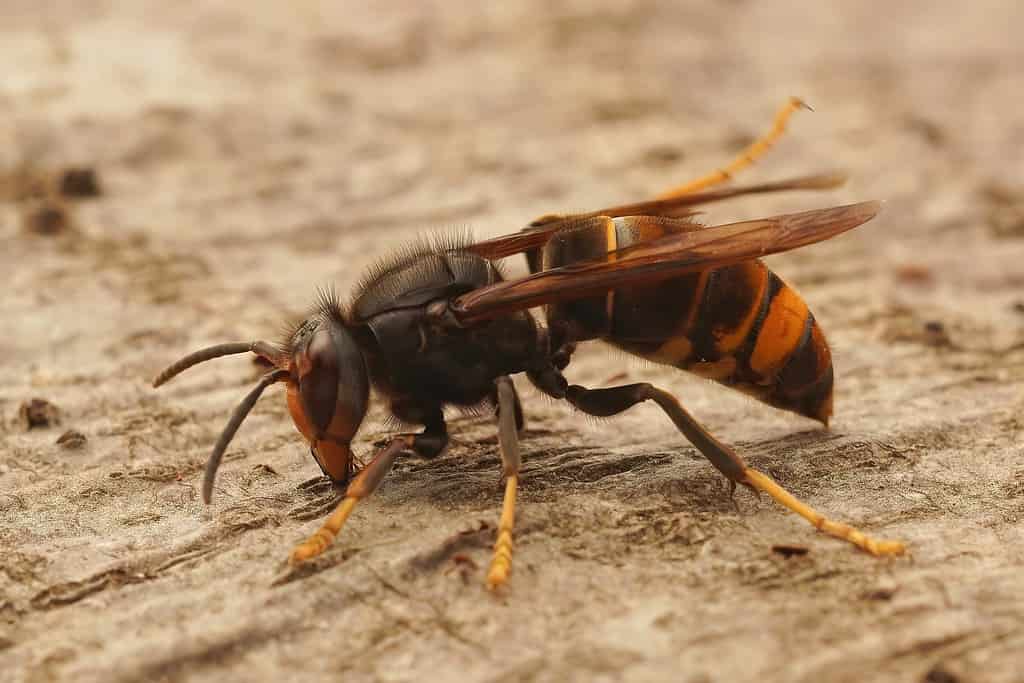Invasive species alert! The yellow-legged hornet has been spotted near Savannah, Georgia. The Georgia Department of Agriculture published a call for the public to help track and report sightings of this hornet that can negatively impact pollinators in the area.
The yellow-legged hornet is also called the Asian hornet due to its native home in Southeast Asia. This is the first time that this hornet has been spotted in the U.S. It can disrupt the natural ecosystem and is a particular threat to honeybees and other pollinators that are essential for plant production.
One of the telltale identification features of the yellow-legged hornet is its yellow legs. They are bright yellow, which makes them a bit easier to spot. The hornets have brown or black thorax and yellow bands on their abdominal segments, similar to other hornets and bees. If you can snap a picture safely, that can be helpful in identification.
Their nests are paper-like and often found in trees or other higher surfaces. If you notice a hornet’s nest, take a quick photo of the nest and any hornets that are around before taking steps to remove it.
Think you’ve spotted a yellow-tailed hornet? You can report your sightings here, including uploading any photos that you were able to take. There are multiple photo examples, although the Georgia Department of Agriculture asks that you still report even if you aren’t sure if what you saw is a yellow-legged hornet. They have experts available to help make a positive identification and take steps to track the spread.

The legs of a yellow-legged hornet can be partially or completely yellow.
©Wirestock Creators/Shutterstock.com
Why Are Yellow-Legged Hornets Bad in Georgia?
These insects aren’t any more dangerous than other hornets (other than a particularly painful sting) but because they are not native to the U.S., they can disrupt the delicate balance of the ecosystem. Native pollinators need access to plants, which then helps pollinate them and encourage plant growth.
Yellow-legged hornets eat honeybees, especially when they find a large colony. This is particularly dangerous for bees that are kept since they have large numbers in a small area. A yellow-legged hornet can polish off a lot of bees before it is removed. Not only does this mean fewer bees and less pollination, it also results in less honey.
Other sightings include hornets found in France, Spain, Portugal, South Korea, and Japan. They are considered an invasive species by the European Union. In some cases, the stings from these hornets actually hospitalized people, although it took many stings to put them in danger. They are bigger than some other species of bees and hornets, so the stings may hurt more and cause more damage at the site.
Thank you for reading! Have some feedback for us? Contact the AZ Animals editorial team.








